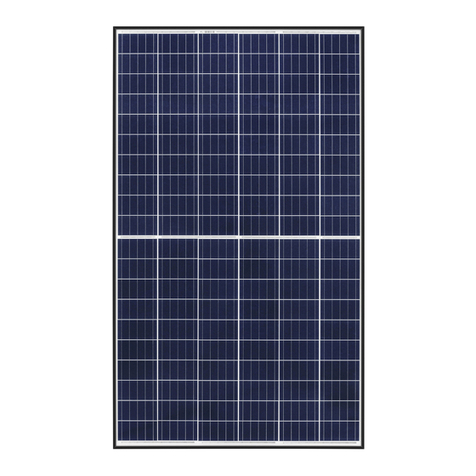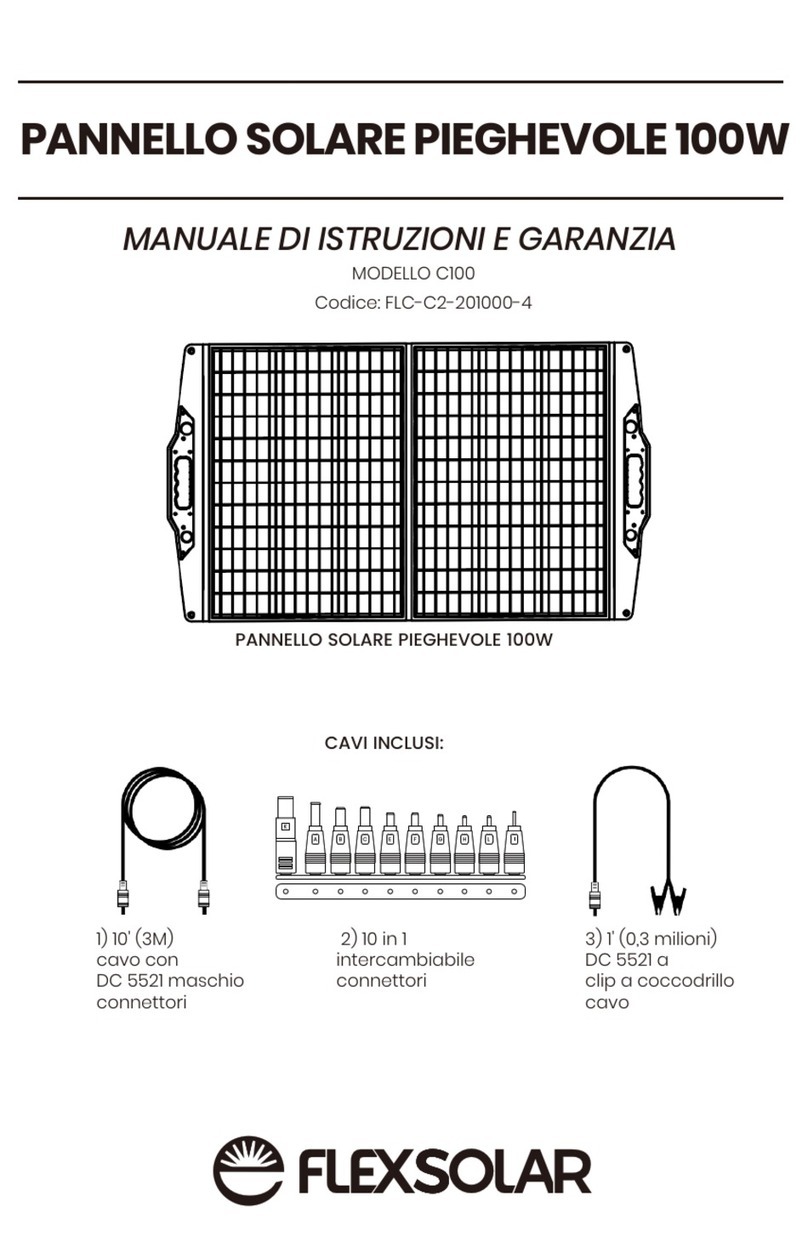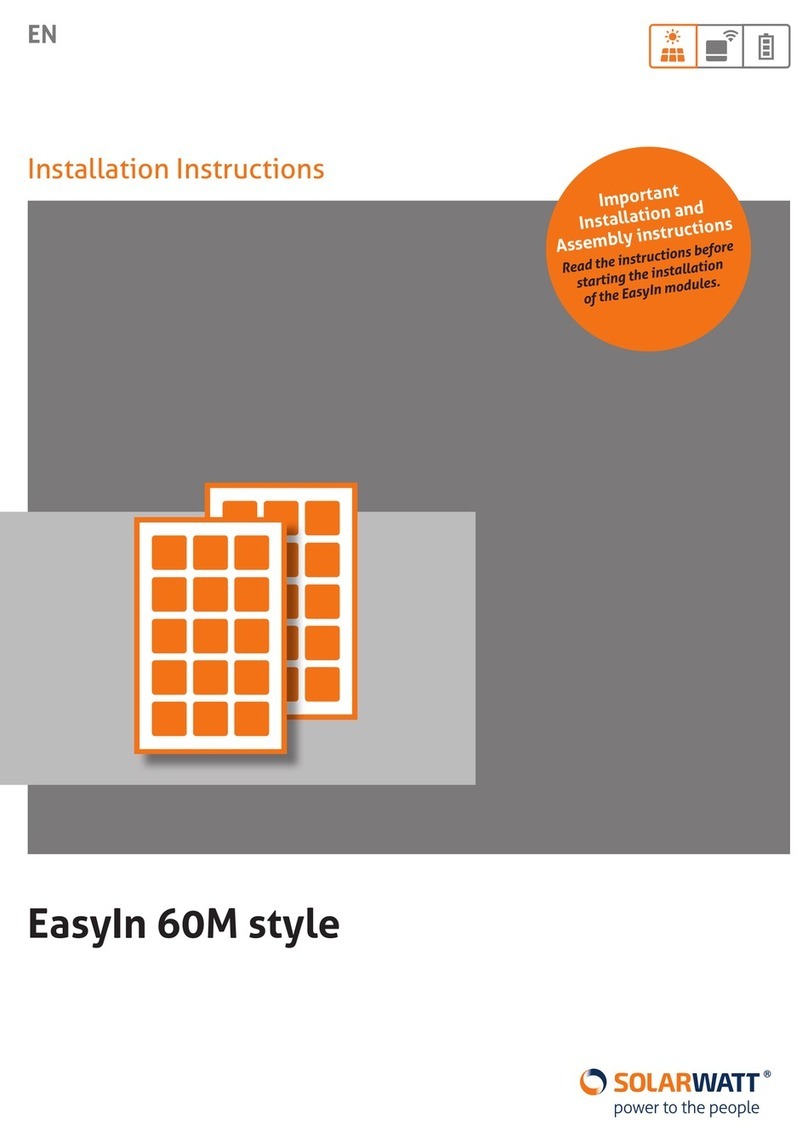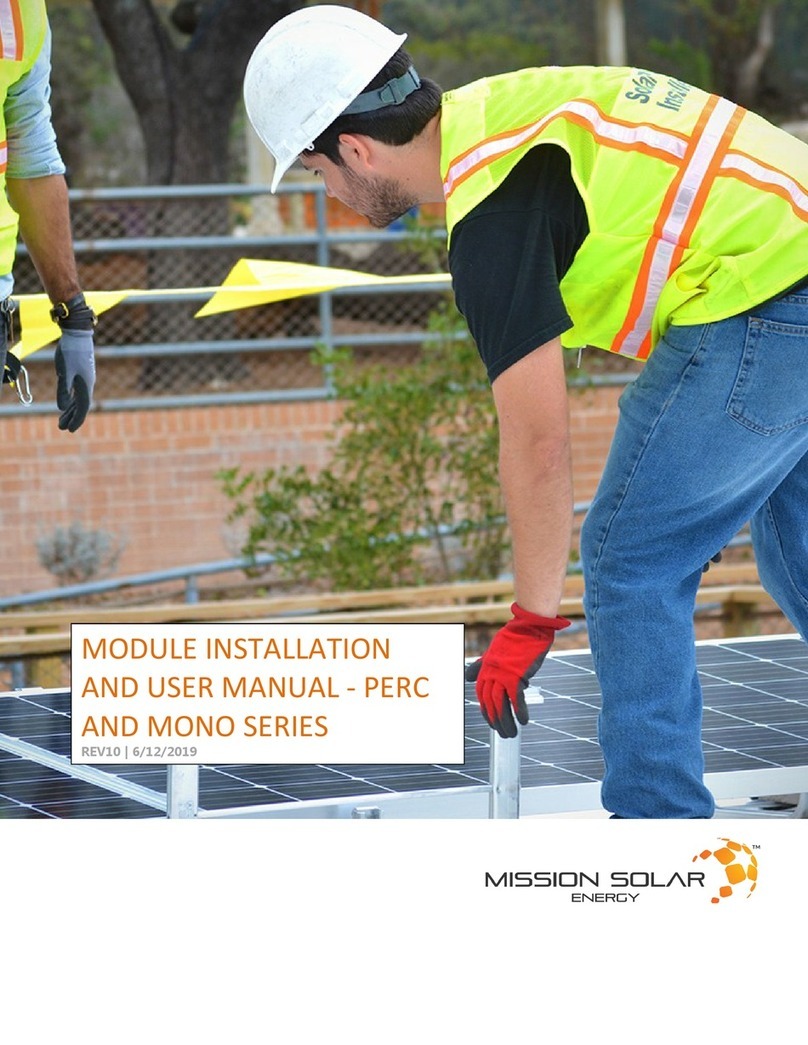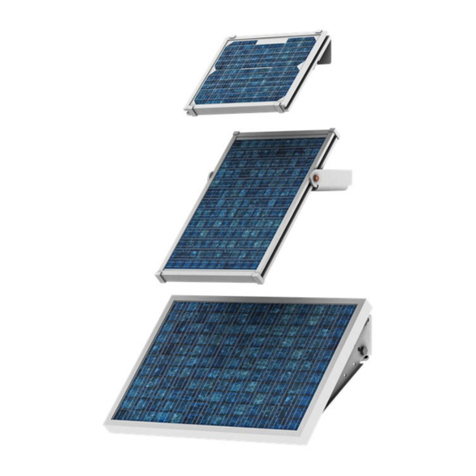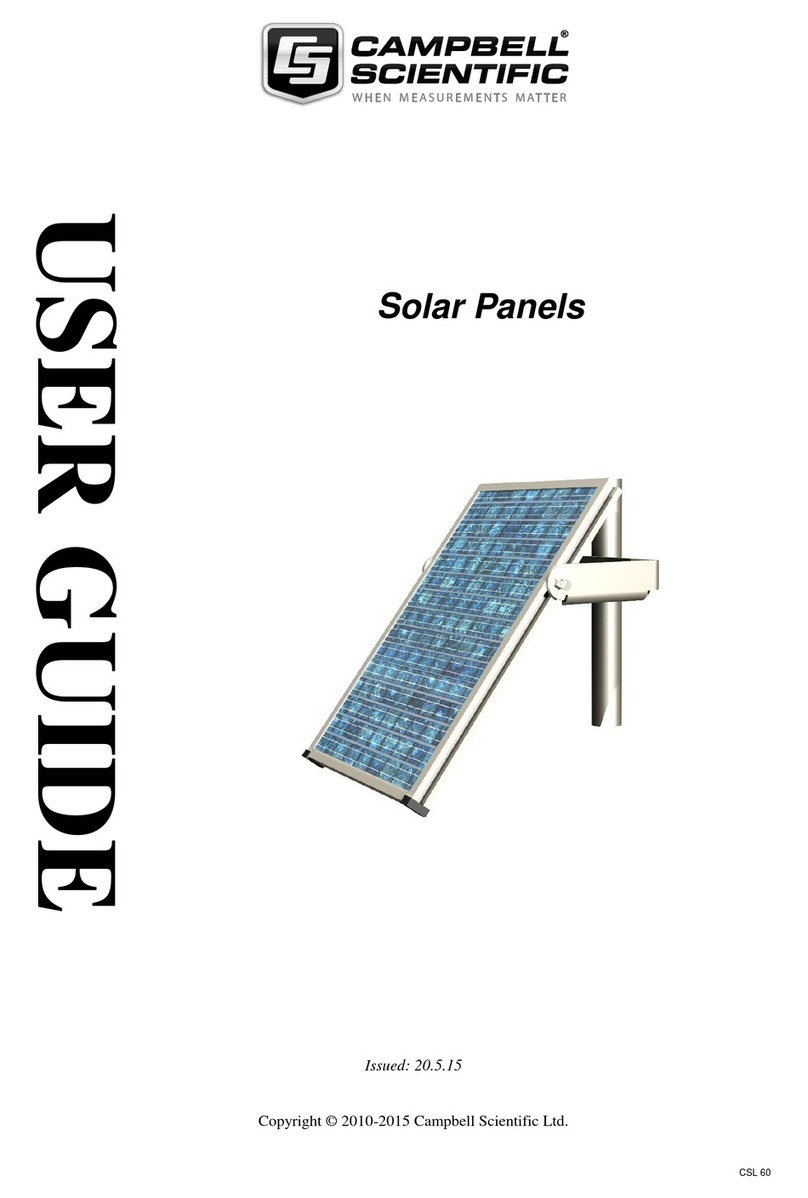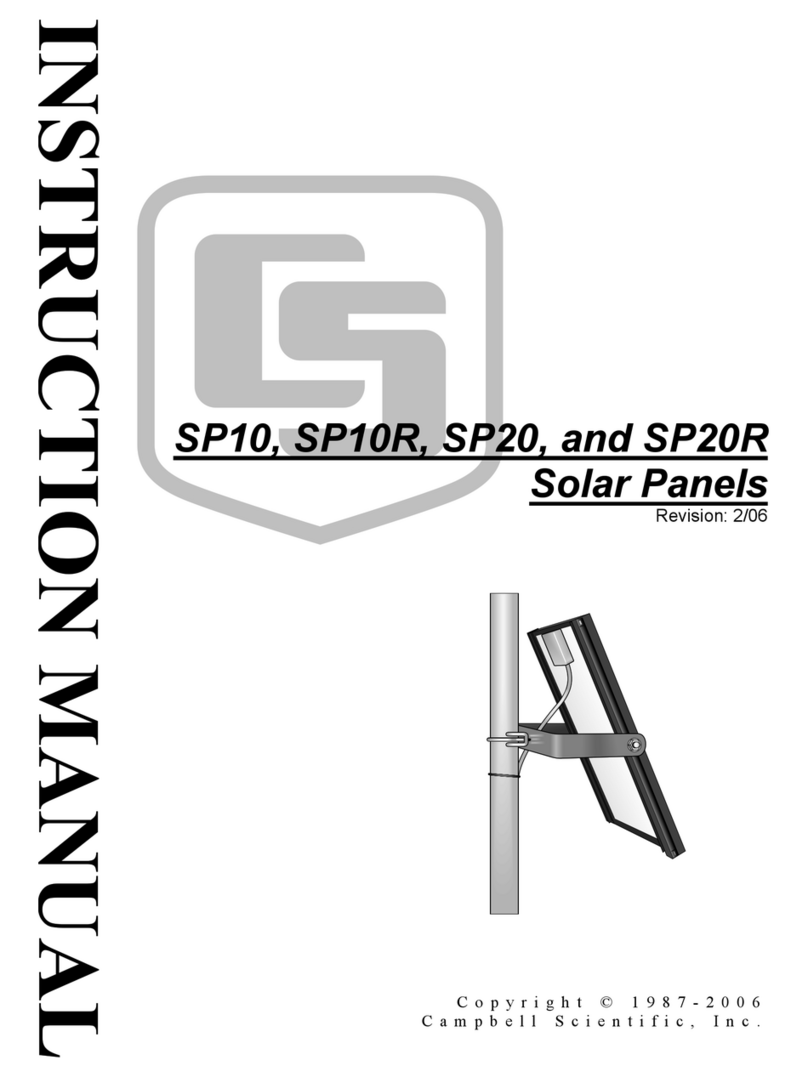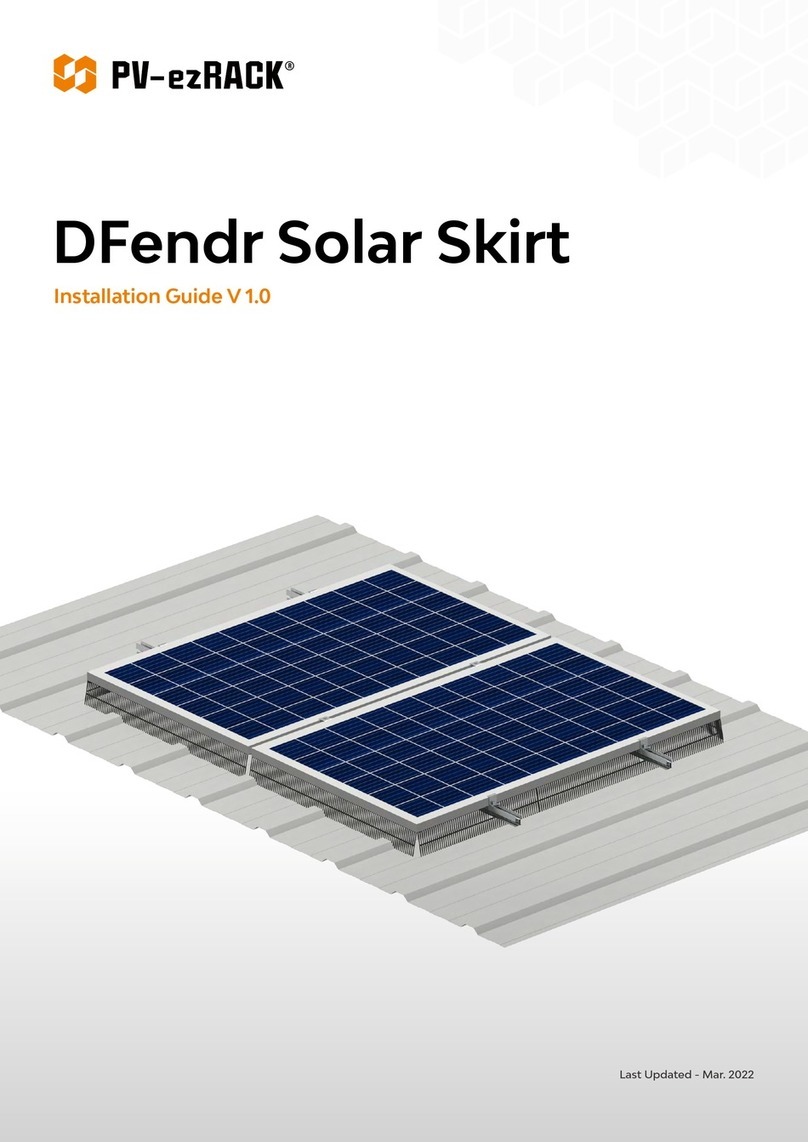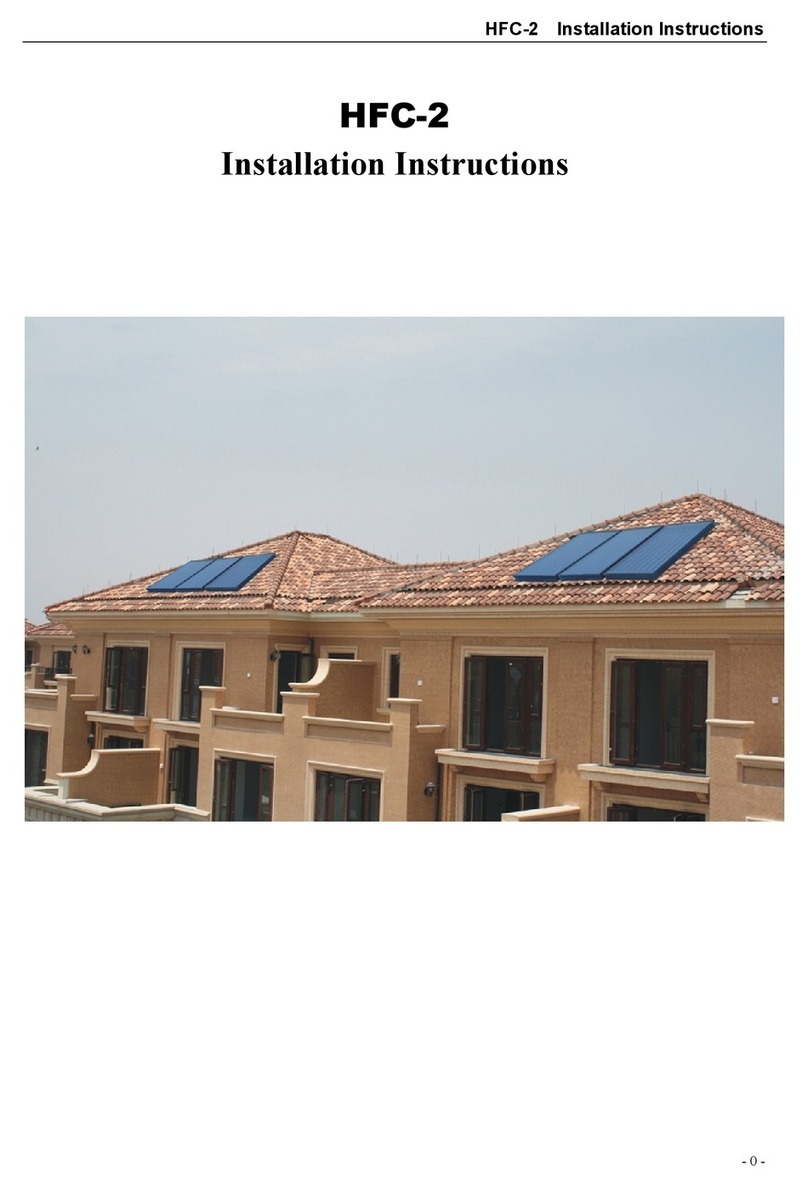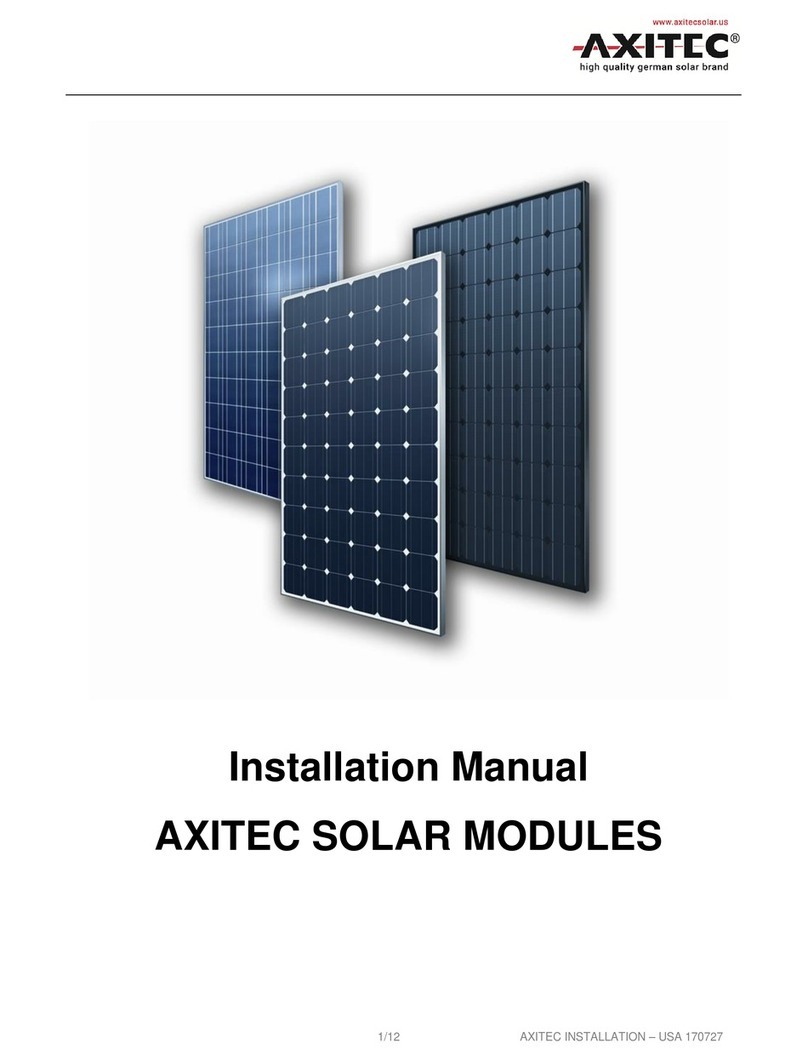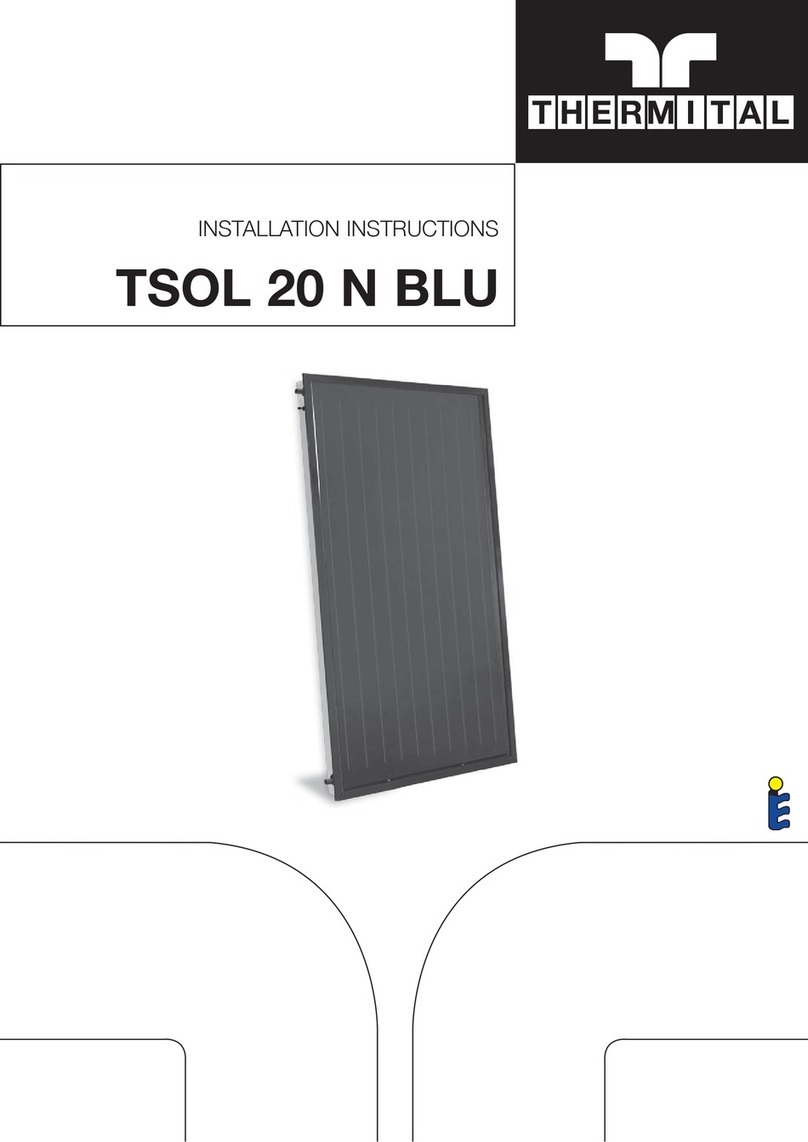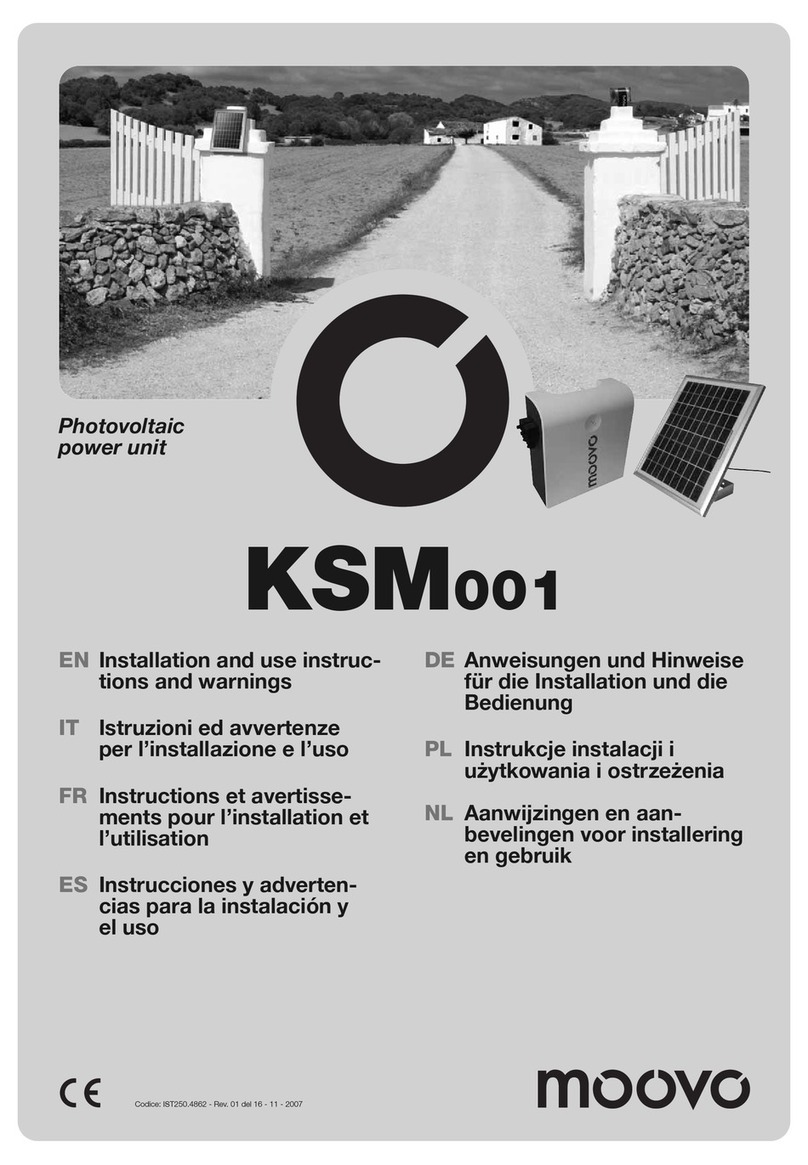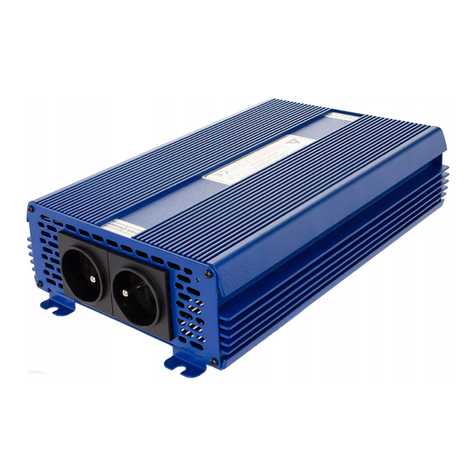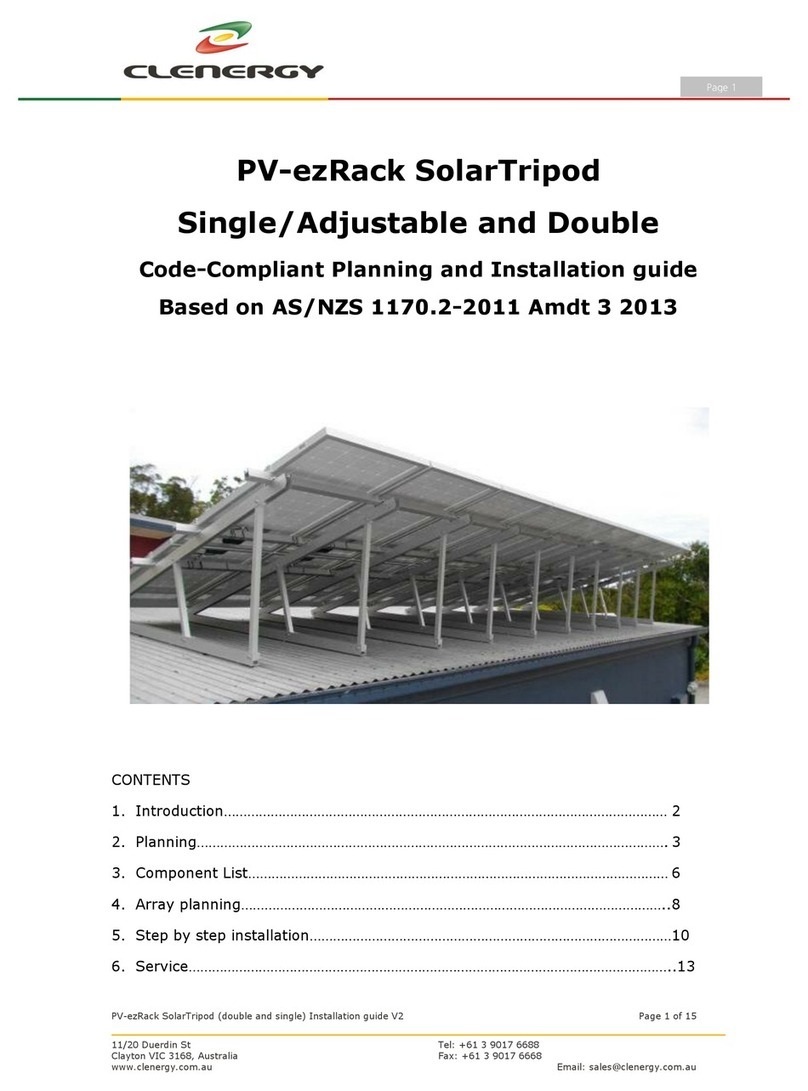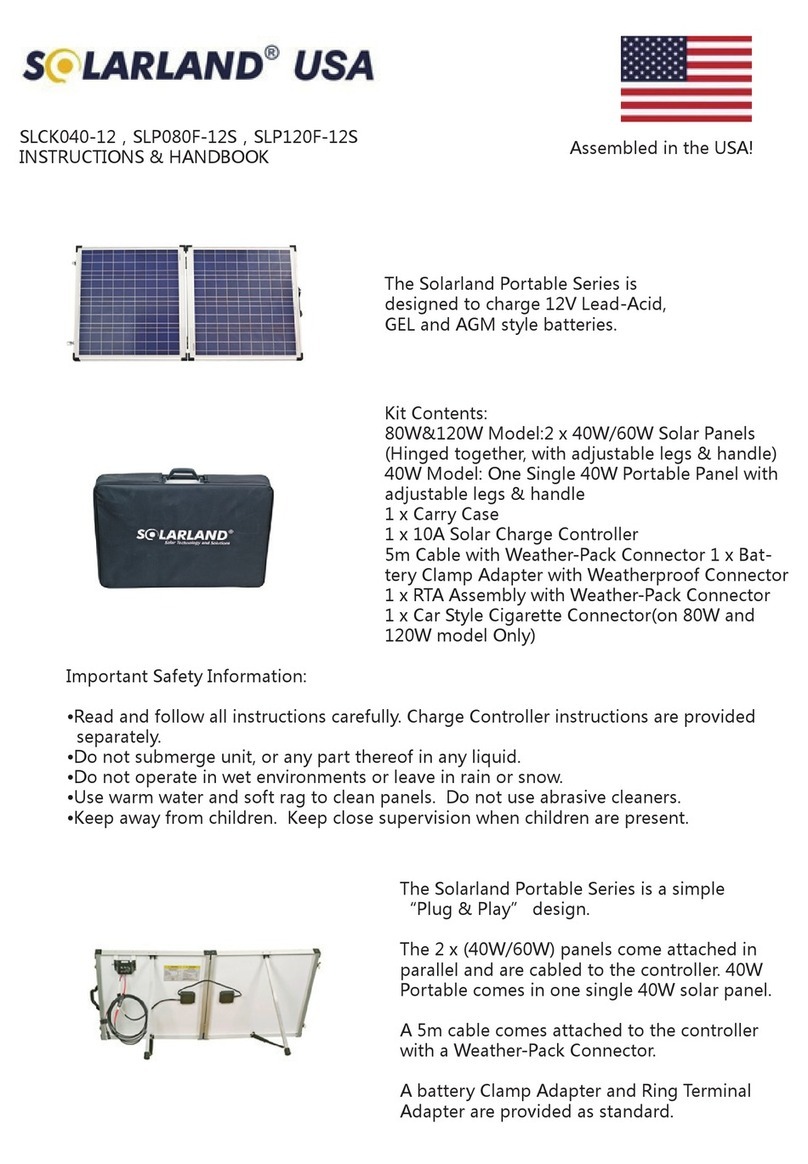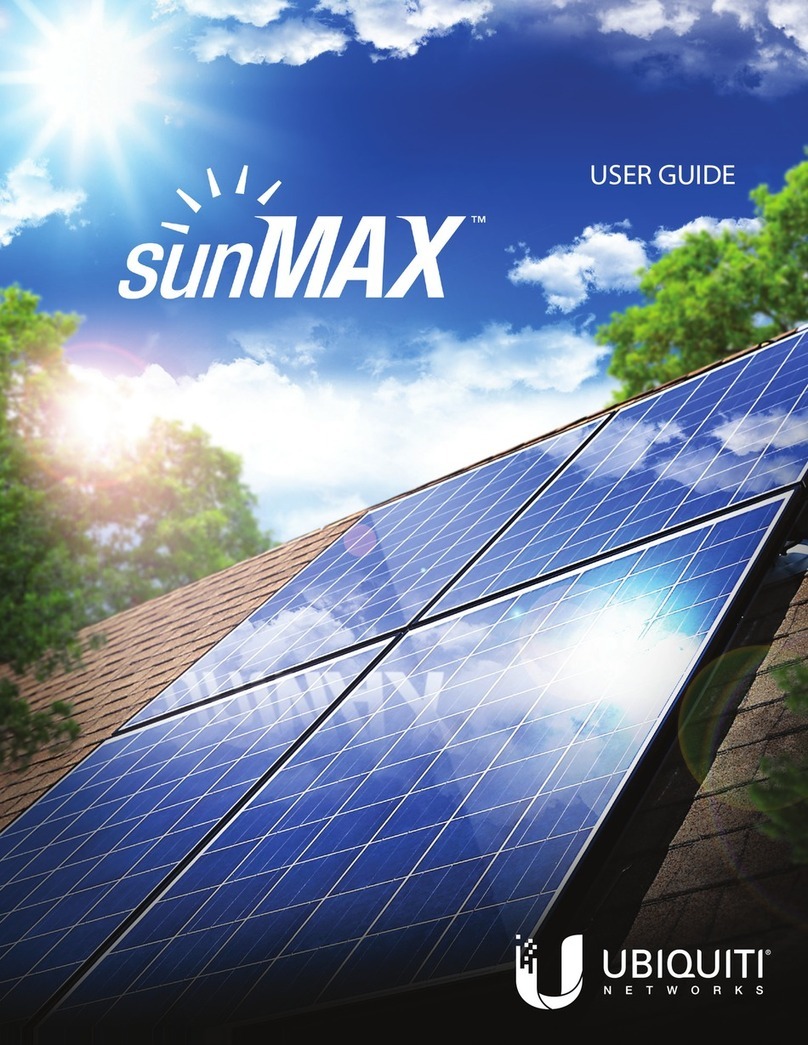
MSX10, MSX20, MSX20R, MSX30R, and
MSX50R Solar Panels
1. General
The solar panel is a photovoltaic power source used for charging lead acid
batteries. The MSX10, MSX20, MSX20R, MSX30R, and MSX50R are 10,
20, 20, 30, and 50-watt solar panels, respectively.
The MSX10 Solar Panels has two leads stripped and tinned to insert into the
terminals labeled 'CHG' on the PS100 or PS12LA Charging Regulator. With a
CR7, the two wires from the solar panel are inserted into the terminals marked
SOLAR PANEL located underneath the 700X Control Module. An external
lead acid battery can be connected to the CR7 at the terminals marked
EXTERNAL BATTERY next to the SOLAR PANEL terminals.
The MSX20R, MSX30R, and MSX50R are regulated solar panels with two
stripped and tinned leads for direct connection to an external 12-volt lead acid
battery.
2. Specifications
MSX10 MSX20/ MSX20R MSX30R MSX50R
Typical peak power (Pp) 10 W 20 W 30W 50W
Voltage @ peak power (Vpp)
(voltage from solar panel before regulator) 17.1 V 17.1 V 17.1 17.5
Current @ peak power (Ipp) 0.60 A 1.17 A 1.75 A 2.9 A
Guaranteed minimum peak power 10 W 20 W 30 50
Approximate effect of temperature on
power
-0.37%/°C
-0.38%/°C
-.38/°C
-.38/°C
Length, cm 42.0 50.1 59.2 83.9
Width, cm 26.9 42.0 50.1 53.7
Depth, cm 2.3 5.0 5 5
Weight, kg 1.50 2.95 5.29 6.0
The above solar panel characteristics assume a 1 kilowatt per
square meter illumination and a solar panel temperature of 25°C.
Individual panels may vary up to 10%. The output panel voltage
increases as the panel temperature decreases.
NOTE
3. Installation
3.1 Mounting
The panel should be mounted facing south if located in the Northern
Hemisphere, or facing north in the Southern Hemisphere. The solar panel
mounts to the mast or leg of the CM10/CM6 Tripod, or any 1 5/8" schedule 40
1
